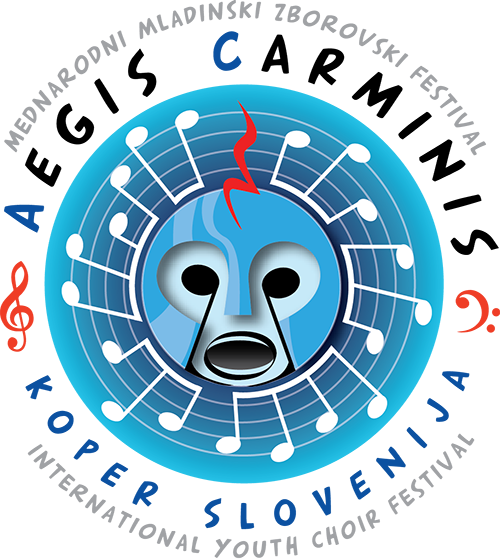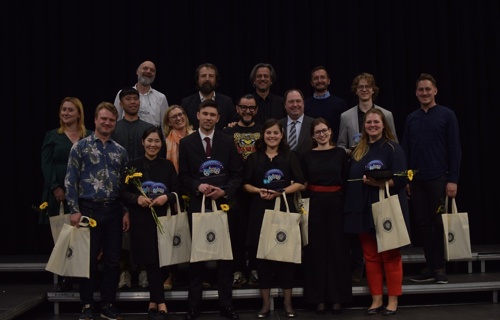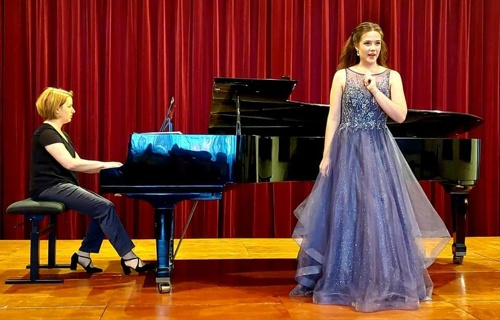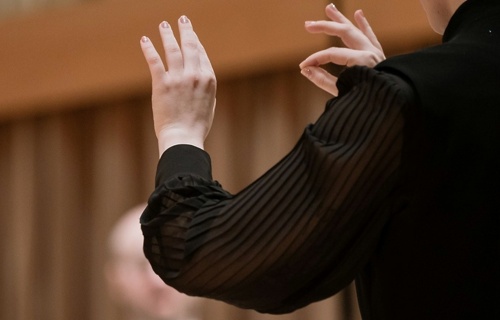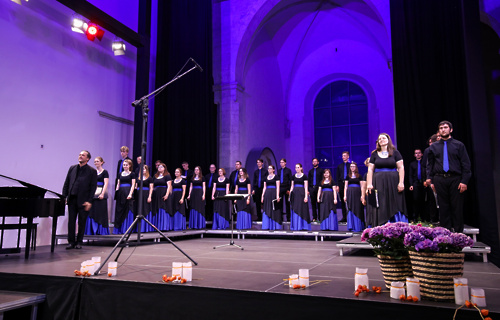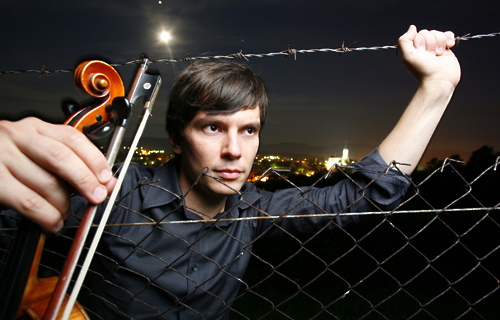Before the premiere of the online concert Requiem for Ancestors, composer Tadeja Vulc allowed us to enter her composition room and talk about the design and creative process. You are invited to visit.
CYCLE OF ONLINE CONCERTS
The academic choirs of three Slovenian universities are presenting themselves
You are invited to VIEW the presentation and analysis of the exceptional musical work REQUIEM FOR ANCESTORS by composer Tadeja Vulc.
The work will be presented for the first time as a whole within the online concerts of the academic choirs of three Slovenian universities, which we offer as a presentation of contemporary Slovenian creativity within the 2nd International Youth Festival Aegis carminis 2021, Koper
Online concert / premiere
6/24/2021 at 8:30 p.m.
Tadeja Vulc
REQUIEM FOR ANCESTORS
for soprano and baritone solo, mixed choir and chamber orchestra.
ACADEMIC CHOIR MARIBOR,
project chamber orchestra, soloists Andreja Zakonjšek Krt and Klemen Gorenšek
Conductor: Tadeja Vulc
Video: Boštjan Budna
Sound: Mitja Kostanjevec
Union Hall, Maribor, November 30, 2018
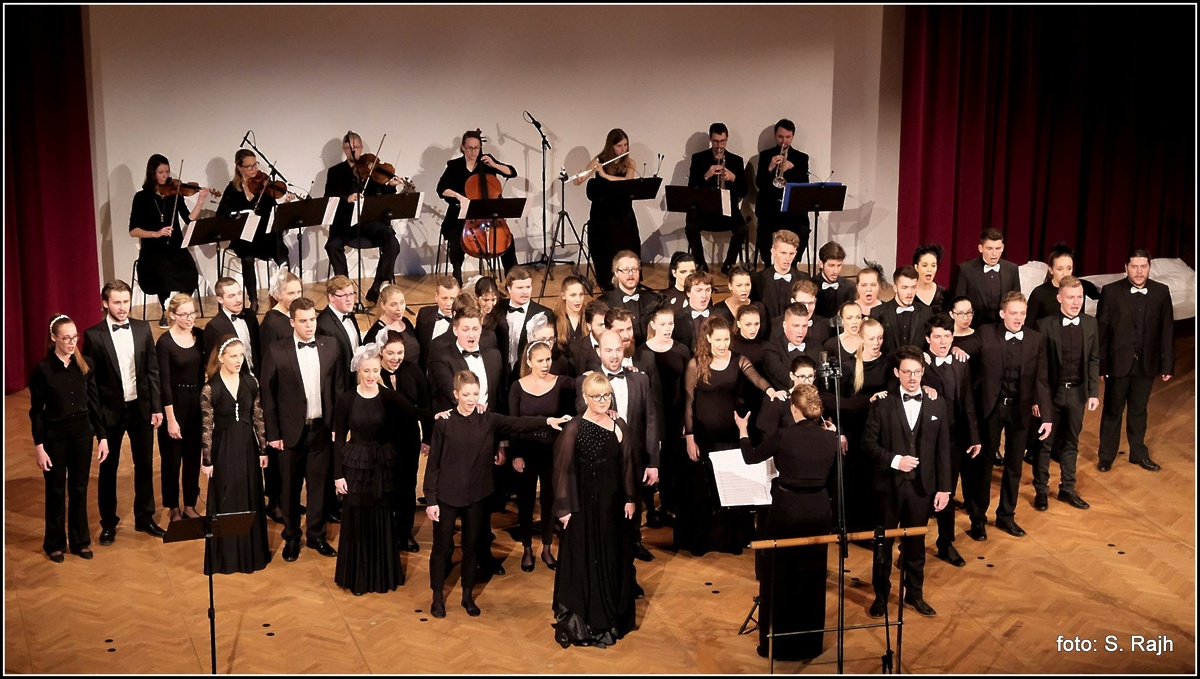
Not often enough do we realise, that our mother and father aren’t related and come from different families, where either family had their own customs and “their own” language.
Requiem for the ancestors was created as a hymn to my ancestors, because of whom I am here today and now and because of whom I can be, who I am.
I am using two languages in this composition: Latin and Slovenian, as languages that paint this duality of the two families that my parents come from. But because we (my parents and I) became a whole “new” family ourselves, I added an additional language at the closing of the Requiem - English, a language that is very present and used for communication all over the world nowadays.
Some movements (texts) are taken from the Mass of the dead, some of the I wrote myself, and the English text was written by Tea Plaftak.
The composition consists of nine movements:
1. Requiem aeternam (Choir + chamber orchestra)
2. Kyrie eleison (Choir + chamber orchestra + soprano and baritone solo)
3. Mama/Mother (Choir + choir soloist + chamber orchestra)
4. Dies irae (Choir + chamber orchestra + soprano solo)
5. Confutatis - Lacrimosa (Baritone solo + accordeon)
6. Dvogovor/Dialogue (Choir soloist + choir)
7. Sanctus (Choir + soprano solo + piano)
8. Otroška spokojnost/A child’s peacefulness (Chamber orchestra + soprano solo)
9. An everlasting circle (Choir + chamber orchestra + soprano and baritone solo)
The entire composition should run without a pause from the first movement to the last; but, it can also be divided into three compounds for better understanding:
- CONFRONTATION or DENIAL (On the stage is a bed, in which sleeps a female choir soloist. She is tossing and turning in her sleep in the first movement - with her, the music changes as well: sometimes it’s hopeful and positive, and other times as cruel as the reality of death.)
1. Requiem aeternam (Choir + chamber orchestra)
2. Kyrie eleison (Choir + chamber orchestra + soprano and baritone solo)
3. Mama/Mother (Choir + choir soloist + chamber orchestra)
Description:
The first movement begins as a prayer for the dead, quite dark. I wanted to paint a world between dreams and reality (after my mother’s death, during waking up in the morning, I myself have though whether she has really died or I have only dreamt it).
In the second movement, where the soloists sing Kyrie eleison and Christe eleison, the audience has a feeling of a simple prayer of two people, watching the stage sitauation unaffected: half of the choir begging the soloist and half of the choir consoling her (by the end of the movement we realise that they are actually her parents, looking at their child from the afterlife and praying for her).
The third movment (Mama/Mother) wakes up the soloist and shows her sadness of losing a loved one (at the end of the movement the bed is removed from the stage - unnoticed, during the composition).
2. REALISATION OF THE JUDGEMENT or ACCEPTANCE OF THE TRUTH and DECISION FOR A “NEW” STEP
1. Dies irae (Choir + chamber orchestra + soprano solo)
2. Confutatis - Lacrimosa (Baritone solo + accordeon)
3. Dvogovor/Dialogue (Choir soloist + choir)
The dramatics of the dialogue of the soloist with the choir run from Dies irae over Confutatis (as if you’re talking to yourself, how to move on, and realise that lives goes on nevertheless. Everything stays positive.)
3. TRANSFORMATION INTO LIGHT, realisation that everything is just as it’s supposed to be and that such is the circle of life.
7. Sanctus (Choir + soprano solo + piano)
8. Otroška spokojnost/A child’s peacefulness (Chamber orchestra + soprano solo)
9. An everlasting circle (Choir + chamber orchestra + soprano and baritone solo)
With the last movement, a hymn to all the ancestors, the Requiem closes with a peaceful thought; everything is, as it should be. The souls of the dead rest peacefully, we, the living, are those, that can still do something in our lives and should be grateful for each living moment. The closing part entails a very important visual effect on stage: the choir begins to form a family tree, and in front of the choir stand the soloists (which makes the audience realise that they have been the mother and father all along), and with the last chord, the conductor turns around, becoming the person that carries the family tree.

We now realise, that we are not alone, that everything is in order and that behind us stand a lot of souls past, whose lives helped us to be “here” today.
